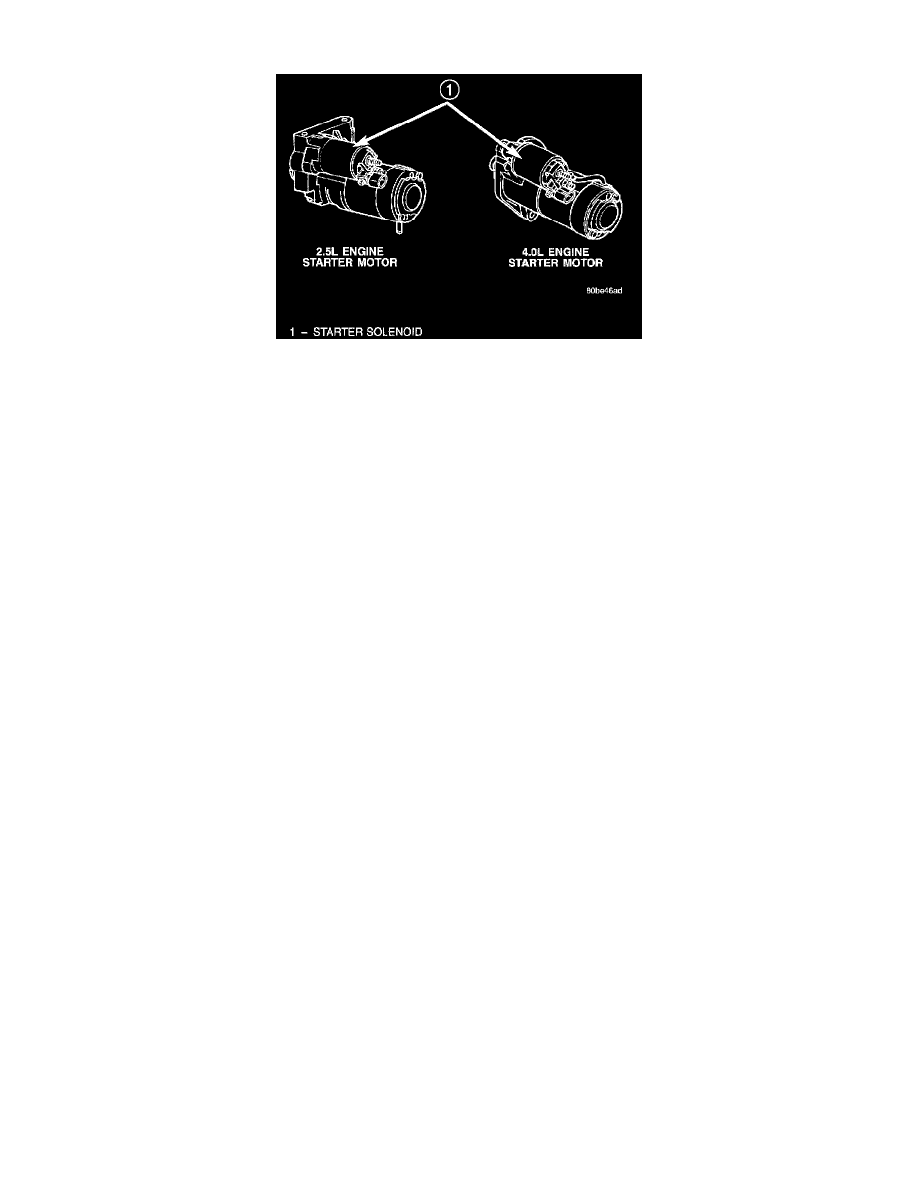Wrangler L6-4.0L VIN S (2000)

Starter Motor: Description and Operation
Starter Motors
The starter motors used for both the engines available in this model are not interchangeable. However, each of these starter motors incorporates several
of the same features to create a reliable, efficient, compact, lightweight and powerful unit. Both starters feature high torque direct current electric motors.
Inside both starter motors the commutator of the rotating motor armature is contacted by four brushes. The starter motor for the engine is driven by four
electromagnetic field coils wound around four pole shoes.The starter motor is rated at 1m1.4 kilowatts (about 1.9 horsepower)0m output at 1m12
volts0m.
These starter motors are equipped with a planetary gear reduction (intermediate transmission) system. The planetary gear reduction system consists of a
gear that is integral to the output end of the electric motor armature shaft that is in continual engagement with a larger gear that fits on a spline on the
input end of the starter pinion gear shaft. This feature makes it possible to reduce the dimensions of the starter. At the same time, it allows higher
armature rotational speed and delivers increased torque through the starter pinion gear. Both starter motors use an overrunning clutch and starter pinion
gear unit to engage and drive the starter ring gear, which is integral to the flywheel (manual transmission) or torque converter drive plate (automatic
transmission) mounted on the rear crankshaft flange.
The starter motors for both engines are activated by an integral heavy duty starter solenoid switch mounted to the overrunning clutch housing. This
electromechanical switch connects and disconnects the feed of battery current to the starter motor through a movable contact on one end of the solenoid
core or plunger. At the same time, the solenoid plunger actuates a shift fork that engages and disengages the starter pinion gear with a starter ring gear.
The starter solenoid has two electromagnetic windings or coils, a pull-in coil and a hold-in coil. The pull-in coil requires more battery current and
produces a stronger electromagnetic field than the hold-in coil.
Both starter motors are serviced only as a unit with their starter solenoids, and cannot be repaired. If either component is faulty or damaged, the entire
starter motor and starter solenoid unit must be replaced.
When the starter solenoid pull-in coil windings are energized the solenoid plunger is drawn into the electromagnetic coil. The solenoid plunger pulls the
shift lever in the starter motor. This engages the starter overrunning clutch and pinion gear with the starter ring gear on the manual transmission flywheel
or on the automatic transmission torque converter drive plate. As the solenoid plunger reaches the end of its travel, it moves the solenoid contact disc to
complete the high-amperage starter feed circuit and energizes the solenoid hold-in coil windings. Battery current now flows between the solenoid battery
terminal and the starter field terminal, energizing the starter and cranking the engine.
Once the engine starts, the overrunning clutch protects the starter motor from damage by allowing the starter pinion gear to spin faster than the pinion
shaft. When the solenoid plunger hold-in coil is deenergized, the solenoid plunger return spring returns the plunger to its relaxed position. This causes
the solenoid contact disc to open the starter feed circuit, and the shift lever to disengage the overrunning clutch and pinion gear unit from the starter ring
gear.
